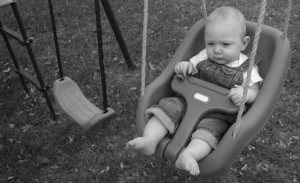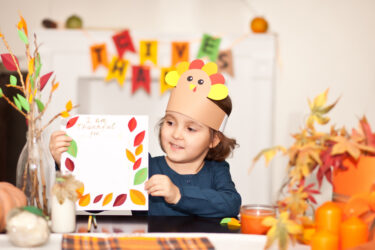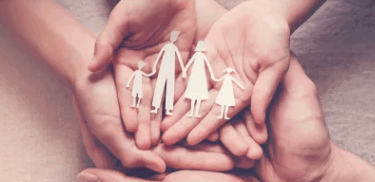“It broke my heart to see my baby’s eyes fill with tears as I began to leave,” says Julie Anderson, mother of one. “This was the first time I left her with a sitter. Leaving her there was one of the hardest things I’ve done, and I know it’s just the beginning.
It can be disheartening for parents to enjoy an evening out or concentrate at work if their baby is struggling with separation anxiety. Children’s tears tug at our hearts as we walk out the door, and their sadness weighs on our minds during the time apart. Understanding that separation anxiety is typical and learning how to patiently help your baby through this stage will alleviate your concern for her apprehension.
Every developmental stage in your baby’s life brings a new set of questions for parents. Often, many of us do not realize that even children as young as 5 months old can experience separation anxiety. As their alertness heightens, they become more aware of their dependence on their parents for security and stability. This can be a difficult time for parents as they struggle to ease their child’s apprehension and cope with their baby’s angst. It is natural to question how to face this phase of your child’s behavior.
Separation anxiety is the result of several powerful factors in your baby’s life. At this stage, he is learning about strong emotions such as anger, loss, disappointment and fear. The combination of young emotions and the processing abilities he is forming trigger very strong reactions. When your baby feels insecure or tries to process the onset of fear, his stress level rises. His crying and distress is a natural reaction to the emotions associated with your absence.
Young children have a difficult time understanding that even though their parent is out of sight, they’re not gone forever. Their inability to understand time contributes to their anxiety. To a 9-month-old child, 15 minutes is an eternity. Young babies haven’t developed the knowledge and confidence that if they’re in an unfamiliar surrounding for a short while, or Mom or Dad is away, they can still feel secure.
Practice Makes Perfect
You can build your child’s security with separation by starting with short time intervals. Schedule a sitter for brief trip to the store, the cleaners or a walk around the block. Beginning with 10 to 15 minutes away and gradually increasing the time will boost your child’s confidence in your return. Stick to the allotted time in order to gradually build your child’s trust in being without you. When your baby shows comfort with short intervals of separation, you can begin to progressively increase her time with a babysitter.
Familiarity provides a baby great comfort. If possible, schedule the same caregiver or babysitter for your baby. When you’re going out, try to have a caregiver in your home instead of relocating your child. The stability of her surroundings, sounds, smells, etc., will reduce the stress and ease some of her anxiety.
Set a routine for when you leave. If you’re going out for an evening, spend a few quiet moments with your child before leaving. Reading a book, rocking or sitting with her favorite toy will give your baby added attention and ease her into being with the babysitter.
If your child is having trouble in the mornings before you leave for work, take advantage of time spent together eating breakfast or in the car on the way to day care. Focus on your baby. Talk directly to her, sing along to nursery rhymes in the car or take a moment to sit with her and the caregiver before you leave for work.
These extra steps will give your baby a secure basis to cope with separation stress. When children learn they can depend on particular security rituals, they also learn that despite their anxiety, Mommy and Daddy do come home from work or an evening out.
Model Behavior
Give your baby the chance to model your behavior and acceptance of separation. Look to positively influence your child’s response to the caregiver. Greet your babysitter together with your child when she arrives. Spending a few moments talking with the caregiver will demonstrate your comfort with this person. Promoting enthusiastic interaction between you and the sitter will show your baby this person is someone you trust. When your baby sees your wide smile and hears the calm interaction between you and the sitter, she will sense your confidence in this new face.
Saying Goodbye
Don’t sneak out of the house! Trying to avoid a separation scene will not prevent your child from becoming upset. When your child realizes you have left, she will experience the same emotional response as if she saw you leave. The difference is she will be left to wonder what happened to you, instead of seeing you walk out the door. A short goodbye will give your child the chance to face your absence. This will further develop your baby’s ability to process her emotions and understand that your absence does not represent a permanent change in her life.
After you’ve said goodbye and are on your way, don’t go back into the house or day care for one final check. Your unexpected return and abrupt second departure triggers another round of anxiety as your child has to adjust to your departure all over again. If your curiosity gets the best of you, wait at least 20 minutes and make a quick call home to check on your baby. This will give your baby some time to relax and become accustomed to her caregiver.
Although some children experience recurring bouts of separation anxiety when starting preschool or elementary school, most children learn the concept of object permanence – that out-of-sight isn’t gone for good – between the ages of 12 and 18 months. As he grows, your child will develop confidence and independence as you help him through separation fears.
Gina Roberts-Grey is a freelance writer and licensed clinical social worker.
tips for easing separation anxiety
- Your baby is more susceptible to separation anxiety when he is tired, hungry or sick. If you know you’re going out, schedule your departure so that it occurs after he’s napped and eaten.
- Don’t make a big deal about your departure. Instead, have the person staying with your child create a distraction, such as playing with a new toy or visiting the mirror. Then say “goodbye” and quickly leave.
- Remember that your child’s tears will subside within minutes of your departure. The outbursts are for your benefit, trying to persuade you to stay. With you out of sight, he’ll soon turn his attention to the person staying with him.
- Help your child learn to cope with separation with short practice sessions at home. Separation is easier when he initiates it – so when he crawls into another room and out of your sight, don’t follow right away; wait for one or two minutes. If you have to go into another room, tell him where you are going and that you’ll return. If he fusses, call to him instead of running back. Gradually, he’ll learn that nothing terrible happens when you’re gone and that you’ll come back.
- If you take your child to a sitter’s home or a child-care center, don’t just drop him off and leave him. Spend a few extra minutes playing with him in the new environment. When you do leave, assure him that you will be back later.
Source: The Complete and Authoritative Guide for Caring for Your Baby and Young Child Birth to Age 5, edited by Steven P. Shelov, M.D. (Bantam; $20).





